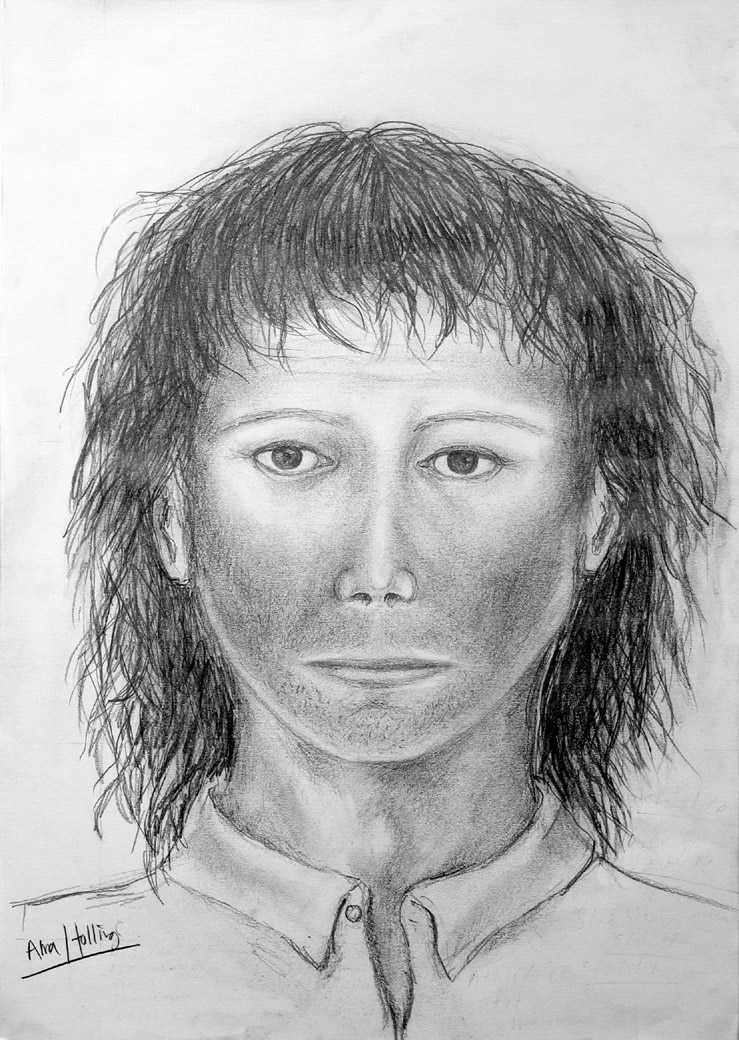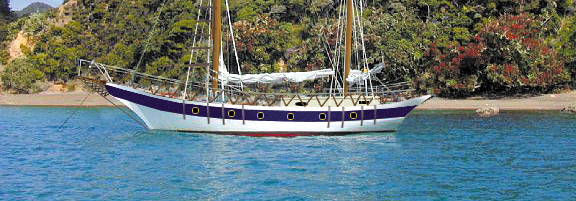
The Defence Case

Mystery Man by Guy Wallace
Only three factors were capable of showing an association between the missing couple and the accused and all three factors were explicable, weak and unconvincing:
The defence answer in essence to each was as follows:
Wallace's purported identification:
This was weak and it was contended by the defence that it in fact excluded the accused by both description of the person and by description of the boat to which the couple were delivered as a two masted ketch as opposed to a sloop;
Wallace's purported identification was supported by the bar manager who had, as had Wallace, used the montage that was shown to her as an aid in describing the man in the bar who it was said by Wallace was also the man on the Naiad who he delivered to the ketch with the missing pair. She also had said that the eyes of photo 3 in montage B were similar to the man but he would require much longer hair and more facial growth to actually look the same.
Since that time she has read the police authorised book 'Silent Evidence' in which is a photo of Scott taken on the night at about 9:30pm. After seeing this photograph, (which she had never been shown by the police), She has come forward voluntarily and made a sworn statement that: Scott Watson was not the man who she served in the Furneaux Lodge Bar on new years eve.
It is worth noting that Wallace when shown this photo at the depositions hearing also said that if the photo had been taken on the night then Scott Watson could not be the man he was describing.
The Wallace (alleged) identification hinges on the bar manager's identification, as it is a main plank of the prosecution case that the man in the bar and the man on the Naiad are one and the same person.
![]()
The two hairs:
There was a strong possibility of inadvertent transfer of the hairs in the ESR laboratory in Auckland on 7th March 1998 when both ST05 (reference hairs from Olivia Hope's bedroom) and YA69 hairs (tiger blanket hairs from the accused's boat) were examined by the same scientist, on the same day, at the same examining laboratory table. There was an unexplained cut in bag ST05 and hairs from Olivia Hope could have inadvertently escaped from that bag. By 7 March 1998 the YA69 hairs had already been screened on two previous occasions without any examiner noticing the two crucial blond hairs. One being 250mm long and the other 150mm long;
The DNA evidence to show that these two hairs were Olivia Hope's was far from conclusive and was inconclusive and unconvincing. Hair 69/13 had shown one positive test in New Zealand which could not be replicated, the confirming test in Australia was said to be unreliable as there had been no contemporaneous test of a control sample which should have been undertaken, testing in the UK showed that the hair had a mixed DNA profile (i.e. from two or more sources). Hair 69/12 had produces no nuclear DNA results in New Zealand and the United Kingdom results only matched 12 out of the 13 positions. If unmatched on the 13th position the hair would be excluded and there was evidence of contamination in the UK testing;
There was a strong possibility, which could not be excluded by the crown hair expert of secondary hair transfer given that both Olivia Hope and the accused had been present at the same function on New Years Eve at Furneaux Lodge; Note: On the subject of secondary transfer, it should be noted that there were 16 animal hairs found on the tiger blanket and yet there has never been an animal onboard Blade since it's launch.
The cellmate confessions:
One prisoner K had a significant purpose of his own to serve and the other prisoner J had little opportunity to develop any close relationship with the accused such that a confession might be made;
Witness J has recently come forward and spoken to a New Zealand Herald reporter. In a taped interview he has stated that his testimony at Scott Watson's trial was a lie, insofar as any admission by Scott Watson was concerned.
He also states that he was coerced by the police into giving that testimony.
Scott's Father stated in both the print and electronic media that he had a fear of this witness disappearing into a room with a policeman and coming out eight hours later with a statement saying that he had lied about having lied. Mr. Watson was wrong. It only took four hours to bring this about and of course witness J would have been reminded that he faced up to six years in prison for having let his conscience get the better of him. After making the above statement to the Police Complaints Authority he immediately contacted the New Zealand Herald reporter again and said that he had lied about having lied about having lied.
It is not denied by anyone that this man has serious mental health problems. For the police to use him in the way that they have is a disgrace. The prosecution lawyers also had a chance to opt out of using this witness, but chose to call him in spite of his condition.
![]()
The other items of circumstantial evidence presented by the crown were also capable of explanation:
Lies in respect of movements on 1 January 1998;
The accused relied on providing his arrival time at Erie Bay at 10.00am upon information provided to him by the caretaker of the Erie Bay property. Hence the information that he provided to the police was a mistake and not a deliberate lie;
Alleged sightings of the accused's boat off Tory Channel entrance in Cook Strait at 4.30pm on 1 January 1998:
The identification of the accused's boat by the two Messrs. Gay was mistaken and could not be safely relied upon because of other evidence presented at the trial as to tidal movements in and out of Tory Channel and other sightings of the accused's sloop at Erie Bay; his boat could not have exited Tory Channel and into Cook Strait on the 1 January 1998;
Changes to the outward appearance of the accused's boat:
The painting of his boat had been planned prior to New Year; the removal of the windvane was not unusual as it was an item not usually used in the Marlborough Sounds but rather reserved for offshore sailing;
Interior cleaning of the boat:
The accused's boat had been through a significant seastorm in Cook Strait on 11-12 December while returning from Tauranga to Picton and cleaning afterwards would not be unusual. The presence of spots of blood on the interior carpets consistent with a bleeding foot injury were also consistent with no cleaning after 1 January 1998 as the accused had cut his foot on 2 January 1998 while at Erie Bay;
Presence of scratch marks on the lining of the forward hatch was misleading:
Little testing had been conducted by the ESR to determine if the scratching could necessarily only be made by fingernails as opposed to other objects; The scratching of the outer perimeters was not possible when the hatch was closed; the hatch could not be secured in any event; the accused has explained to his former girlfriend that the scratching had been made by his nieces;
Missing squab cover and holes on other cover and squab material:
Explanation had been provided to his girlfriend that there had been a burn hole in one squab cover; it was contended that paint had been spilt on another squab cover and the other had simply been mislaid;
Missing blue shirt:
The accused told the police in April 1998 that they would have had his shirt, as it would have been left on the boat. It was contended that such a statement would not be consistent with a deliberate destruction of the shirt by the accused;
The motive evidence:
This was contended as an attempt by the crown to blacken the accused's character and to paint the accused in as prejudicial light in the eyes of the jury as possible;
There were other important aspects of the defence case:

The above mentioned points will eventually all be covered in more detail at other locations on this website.
Back to Homepage